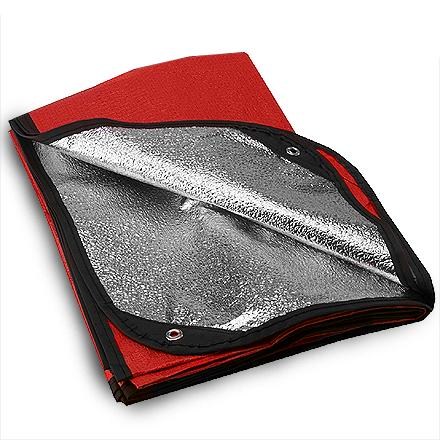A first aid kit is a travel essential, especially when you are going on a multi-day hiking tour with limited (or no) access to stores for supplies. Each traveller will have specific needs such as medical conditions, but some items are commonly used by nearly everyone.
You can purchase a pre-packaged kit and add anything you need, but it’s easy to make your own and tailor it to your trip and personal requirements. Organize and waterproof your kit with small re-sealable bags and plastic bottles. Label medications. You can also include other commonly used items in your first aid kit such as lip balm, sunscreen and insect repellent.
Replace and restock items that are used most often (moleskin for blisters, bandages, pain reliever).
A basic first aid kit should include the following items:
- Prescription medication
- Epinephrine pen for allergies
- Bandages: Assorted sizes for small cuts, blisters, etc.
- Moleskin: Prevents blisters. Cut and apply a section to your foot as soon as you discover a “hot spot.”
- Duct tape: Works instead of moleskin as well as being handy for many other uses.
- Gel-crystal ice packs: Bend to activate. For icing sprains.
- 4-inch closure strips or butterfly closures: For closing large wounds. 4-inch strips are more effective than butterfly.
- 4”X 4”sterile dressing pads (5 to 10): To apply pressure to a wound and stop bleeding
- Non-adherent sterile dressing (2 inch by 2 inch): Use these or Second Skin to cover blisters, burns or lacerations.
- Gauze roll or tensor bandage: Holds dressing in place.
- Small roll of 1-inch adhesive tape or athletic tape: Holds dressings in place.
- Multi-use tool or knife: often include a knife, scissors, tweezers.
- Tweezers: For removing splinters, ticks, and removing debris from wounds.
- Scissors: Trauma scissors, which have a blunt end to protect the patient, can be used for cutting away clothing from injury, cutting medical tape, etc.
- Thermometer: Digital or a traditional thermometer in a cushioned case.
- Malleable splint: Lightweight foam-covered aluminum splint.
- Irrigation syringe (35 cc): Used to flush and clean wounds.
- Suction syringe (65 cc): Used to clear mouth of fluids when giving CPR.
- Safety pins (variety of sizes): Can help remove splinters, fasten arm sling, or make a hole in a plastic bag for improvised wound irrigation.
- Cotton-tip swabs: For removing foreign objects from eye, or applying antibiotic ointment.
- Re-sealable plastic bags: Many uses.
- Tensor bandage: Used as outer wrap on splints, wound dressings or support for joint injuries. Be careful not to wrap too tightly.
- Antiseptic towelettes: For cleaning small wounds.
- Cleansing pads with lidocaine: For cleaning. Includes a topical anesthetic for abrasions, stings, etc.
- Topical antibiotic ointment: For application to wounds.
- Povidone Iodine USP 10%: For preventing infection (dilute to a ratio of 1%) for flushing wounds.
- Aloe vera gel: Found in packets or small bottles for relief of minor burns.
- Pain relievers, Ibuprophen, Aspirin, etc.: Relief for minor aches and pains, reduces fever, helps reduce inflammation of sprains and other injuries.
- Antihistamines: For relief of pollen allergies, or to reduce reaction to bites and stings.
- Immodium 2 mg capsules or tablets: For relief of diarrhea from intestinal infections.
- Pepto Bismol or antiacid tablets: For relief from general diarrhea, abdominal upset.
- After Bite or hydrocortisone cream USP 1 percent: Relieves skin irritation from bites, poison oak, stings, or allergic reactions.
- Disposable medical gloves: Protect against blood-borne diseases and infection.
- CPR microshield mask: A compact flexible barrier with a one-way valve for rescue breathing, which protects user from blood, vomit or saliva.
- Oral rehydration salts: Packet of electrolyte salts and glucose for treatment of dehydration, heat exhaustion, or loss of fluids from vomiting or diarrhea. Gatorade powder also works.
- Space bag/blanket: Lightweight emergency shelter. For treating hypothermia victims.
- Paper and pencil: For recording medical data such as body temperature, pulse, time and date of symptoms, injuries, medicines administered, etc.
- First Aid booklet











